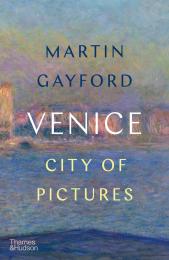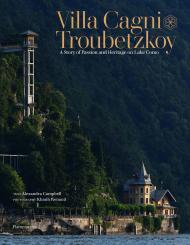Хоча Венеція більше відома своїми м’яким світлом та атмосферними художниками, цей елегантний новий том змінює наше розуміння венеціанської скульптури та її місця в художній традиції міста.
Ця книга, що є насолодою для очей та захопливим, ерудованим чтивом, починається з ілюстрованого огляду 120 дожів, які очолювали Венеціанську республіку, а потім продовжується детальним оглядом неймовірної кількості скульптур та пам’ятників, що їх увічнюють.
Хоча Венеція славиться живописом та музикою, вона має скульптурну традицію, яка була затьмарена Флоренцією та Римом. Ґрунтуючись на нових дослідженнях, цей том розкриває справжню велич шести століть венеціанської скульптури. Найстаріші роботи, що датуються тринадцятим століттям, ці шедеври наповнюють церкви міста та включають роботи великих майстрів від родини Ломбардо до Антоніо Ріццо, Якопо Сансовіно, Алессандро Вітторії та Бальдассаре Лонгени.
Скульптурні дива Венеції розповідають історію процесії дожів — політиків, вчених, завойовників, купців і навіть святого П'єтро Орсеоло — протягом тисячолітньої історії. Цікавий текст висвітлює пригодницьке, насичене подіями, а часом і славне життя цих легендарних постатей, тоді як нещодавно замовлені фотографії демонструють велич і красу занедбаного аспекту культурної історії Венеції.
Про автора:
Франческо «Тото» Бергамо Россі очолює Фонд венеціанської спадщини з 2010 року. Граф Маріно Дзорці, колишній директор Бібліотеки Марчіани, походить з однієї з найстаріших венеціанських родин, у роду якої був дож. Маттео де Фіна спеціалізується на фотографуванні мистецтва, інтер'єрів та архітектури. Діана фон Фюрстенберг — відома філантропка та знаменита модельєрка, найбільш відома своєю сукнею-халат, а також засновниця однойменного світового бренду розкішного способу життя, який зараз продається у понад 55 країнах. У 2005 році вона отримала нагороду за досягнення всього життя від Ради модельєрів Америки, а в 2012 році була названа найвпливовішою жінкою у світі моди журналом Forbes. Вона є міжнародним послом Фонду Венеціанської спадщини. Пітер Маріно, член Американської ради дизайнерів моди, є директором Peter Marino Architect PLLC, нью-йоркської архітектурної фірми, яку він заснував у 1978 році. Відомий своєю роботою в житлових та роздрібних приміщеннях для найвідоміших імен у світі моди та мистецтва, його нагороджені нагородами роботи включають масштабні комерційні, культурні та готельні проекти. Він є головою Фонду Венеціанської спадщини та членом ради директорів Міжнародного комітету Центрального союзу декоративного мистецтва.














